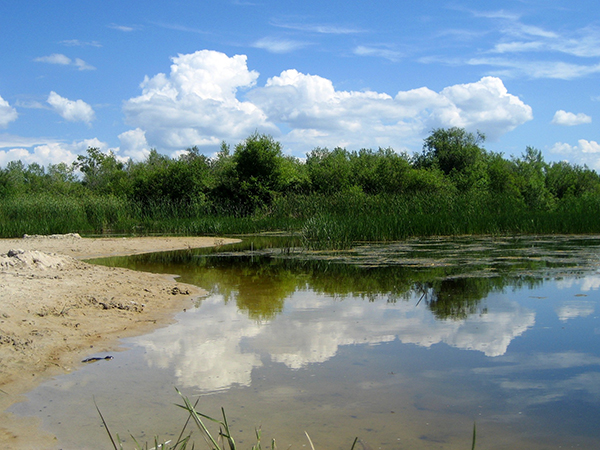CANADA, NORTH AMERICA
Lake Winnipeg
Lake Winnipeg is located in central Canada in the province of Manitoba. With a total area of 24.400 km², it is the 10th largest freshwater lake in the world. The 416 km long lake divides into two basins, a larger northern basin about 100 km wide and a smaller southern basin 40 km wide. Both basins are connected by a 2,5 km wide channel called The Narrows. The average depth of Lake Winnipeg is 12 m, with depths of 13,3 m and 9,7 m in the north and south basins respectively.This freshwater lake lies at an elevation of 218 meters above sea level. Lake Winnipeg is the largest remnant of the giant prehistoric Lake Agassiz, which formed as a result of deglaciation between 12.000 and 8.000 years ago. Lake Winnipeg assumed its present shape about 2.500 years ago when independent northern and southern basins merged as the underlying land rose with the removal of the ice sheet load.
What makes it special
Lake Winnipeg has the largest watershed of any lake in Canada and its drainage is about 40 times larger than its surface, a ratio bigger than any other large lake in the world.
Protection status
· Beaver Creek Provincial Park
· Camp Morton Provincial Park
· Elk Island Provincial Park
· Fisher Bay Provincial Park
· Grand Beach Provincial Park
· Hecla-Grindstone Provincial Park
· Hnausa Beach Provincial Park
· Kinwow Provincial Park
· Patricia Beach Provincial Park
· Sturgeon Bay Provincial Park
· Winnipeg Beach Provincial Park

Biodiversity
Lake Winnipeg boasts a rich diversity of fish species, hosting more than any other lake in Canada west of the Great Lakes. Sixty out of seventy-nine native species in Manitoba live here. The shortjaw cisco and bigmouth buffalo are endangered species in the lake. Anglers fish some species, such as Rainbow Trout and Brown Trout, and introduced invasive species such as Smallmouth Bass and Common Carp.
During the summer, Lake Winnipeg serves as a vital habitat for several species of birds. Isolated islands provide nesting sites for colonial birds such as Pelicans, Gulls, and Terns. Pipestone Rocks are globally significant for hosting a considerable population of American White Pelicans. The lake is crucial for autumn migration, with large populations of waterfowl and shorebirds utilizing sandbars and the Netley-Libau Marsh. The lake also supports the nesting of the endangered Piping Plovers, with Gull Bay Spits identified as nationally significant nesting sites.

Threats
Nutrients in agricultural run-off and sewage discharges threaten Lake Winnipeg’s future by stimulating large amounts of blue-green algae that imbalance the lake’s food web and can be toxic to humans. The increasing frequency and severity of flooding associated with climate warming, the drainage of wetlands, and the regulation of water levels are having further negative effects on the lake.
Lake Winnipeg was assigned as Threatened Lake of the Year by the Living Lakes Network in 2013.

Our Work
Founded in 2005 by concerned citizens, the Lake Winnipeg Foundation is now Manitoba’s only membership-based freshwater organisation, working collaboratively with non-profit, academic, industry and government sectors, First Nations and the public to restore and protect Lake Winnipeg.
Combining the expertise of the Science Advisory Council and the commitment of members, LWF has been nationally recognized for the ability to link science with action. The flagship initiative, the Lake Winnipeg Health Plan, identifies evidence-based actions to reduce phosphorus loading, the root cause of potentially harmful algal blooms.
Lake Winnipeg Foundation
www.lakewinnipegfoundation.org
info@lakewinnipegfoundation.org


